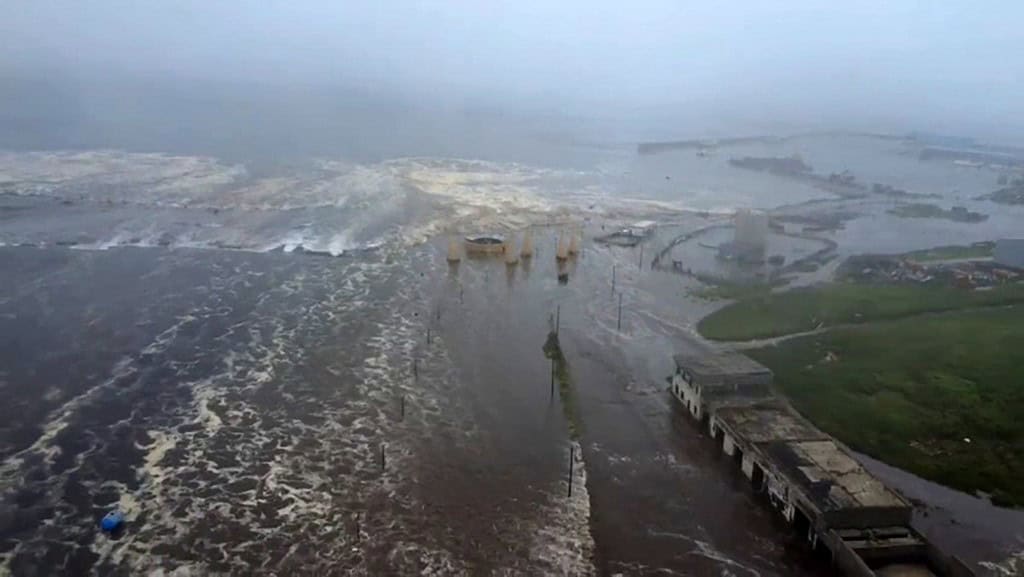An 8.8-magnitude earthquake struck off Russia’s Far East coast on Wednesday, one of the most powerful quakes ever recorded, triggering tsunamis with waves up to four meters high and evacuation alerts from the United States to Colombia.
Russian authorities reported minor injuries from the earthquake but no deaths. Officials in the Kamchatka Peninsula in Russia’s Far East announced Wednesday that the tsunami warning was lifted more than 11 hours after the powerful quake.
“Dear residents and visitors of Kamchatka, our colleagues from the State Emergency Ministry have lifted the tsunami warning,” regional emergency minister Sergei Lebedev said on social media.
The quake occurred Wednesday morning off the coast of Petropavlovsk (11:24 p.m. GMT Tuesday) in Russia’s Kamchatka Peninsula at a depth of 20.7 kilometers, according to the U.S. Geological Survey (USGS).
Authorities in countries across the Pacific basin, from the United States to Mexico and Colombia, issued evacuation alerts after the earthquake, which the USGS said was among the 10 strongest recorded quakes.
In Russia, a tsunami flooded the port of Severo-Kurilsk in the Kuril Islands, about 350 kilometers from the quake’s epicenter. It was the strongest earthquake in the Kamchatka region since 1952, according to the regional seismic monitoring service.
Waves as high as four meters pushed 400 meters inland and reached a World War II memorial, according to Alexander Ovsiannikov, mayor of the Northern Kuril Islands district. Nearly 2,000 people were evacuated.
“Our factory is sinking under water!” cried a resident of Severo-Kurilsk in tears. The quake also generated a tsunami of three to four meters in Elizovsky, Kamchatka.
Tsunami Hits Russia After 8.8 Magnitude Earthquake
It was terrifying
“We ran out in our underwear with the kids,” a Kamchatka resident told the state outlet Zvezda. “Luckily we had packed a bag with water and clothes by the door. We grabbed it quickly and ran… It was terrifying,” she said.
Japan initially issued an evacuation order for nearly two million people, but by Wednesday night, the meteorological agency downgraded the warning level for the Ibaraki and Wakayama regions to an “advisory.”
Local media reported that a woman in Japan died after driving off a cliff while trying to evacuate from a warning zone. A 1.3-meter tsunami wave hit Miyagi, a port in northern Iwate Prefecture. In Fukushima, where the nuclear plant was devastated by a tsunami in 2011, workers were evacuated as a precaution, the plant’s operator said.
Alerts across Latin America
Authorities in several American countries, from the United States to Mexico and Colombia, issued evacuation alerts for coastal residents. The U.S. Pacific Tsunami Warning Center issued alerts for waves between one and three meters along the coasts of Chile, Costa Rica, French Polynesia, Guam, Japan, and other Pacific islands.
The center later lifted its evacuation alert for Hawaii, where sirens had sounded on Waikiki Beach—a hotspot for surfers—and a photographer reported traffic jams as residents fled to higher ground. Hawaii Governor Josh Green said all flights to Maui were canceled as a precaution.
Waves up to one meter were expected to reach the coasts of Colombia, Mexico, Australia, New Zealand, and Taiwan, the center added. Ecuador ordered the evacuation of beaches, docks, and low-lying areas in the touristy Galápagos Islands, 1,000 kilometers from the mainland, due to the tsunami threat.
In Mexico, civil protection authorities ordered residents away from coastal areas, while Chile prepared for a possible tsunami to hit Easter Island first. Authorities in Guatemala, Costa Rica, El Salvador, and Panama also urged residents to avoid water activities on Pacific beaches.
Officials in the Marquesas Islands, a French Polynesian territory, warned that waves up to four meters were possible. Wednesday’s quake was the most powerful in the Kamchatka region since 1952, according to the regional seismic monitoring service, which warned of possible aftershocks as strong as magnitude 7.5.
Kamchatka lies at the junction of the Pacific and North American tectonic plates, making it one of the most seismically active regions in the world.






